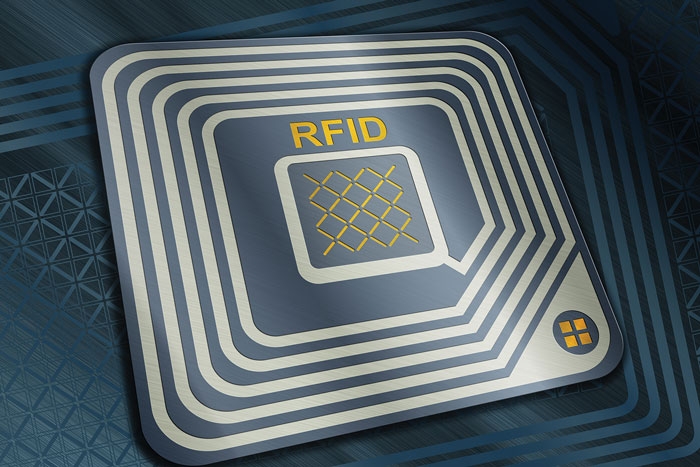
Backstory: RFID goes beyond barcoding
April 30, 2019
By Ed Garstkiewicz
 Photo: JacobH/iStock/Getty Images Plus
Photo: JacobH/iStock/Getty Images Plus April 30, 2019 – Radio-frequency identification – RFID – is coming in from the cold.
It is no longer just for tracking movements of equipment or consumer goods within warehouses or beyond to store shelves. The proliferation of industrial-grade RFID hardware and software is making radio-frequency transmission a reliable, cost-effective and mission-ready technology for the shop floor. It provides real-time tracking of production tooling, cycles or products as the latter move through build-up stages.
For example, RFID has had strong uptake in injection moulding, where it ensures the right mould is being used and the right program run; it works exceedingly well managing modular toolsets of any kind. Another example: in my company’s model Smart Factory, manufacturing is carried out in modular, reconfigurable cells. The progression of products as they are built up is tracked by RFID.
RFID is ideal for preventive or predictive maintenance programs and parts inventory management, including smart shelving strategies that reduce labour, loss and stock-outs. Again, in my company’s local manufacturing, we use RFID to track our crimp tools. The tracking is linked to a database that is automatically updated when a tool goes out for maintenance. (Many RFID tags can store enough data to track the maintenance history of that component and link it to a broader database; the same information is accessible to technicians at the machine or in the back office.) These are increasingly popular and readily scalable applications. The wheel has already been invented and “hardened” for industrial use.
In addition, RFID is being featured in emerging Industry 4.0/Industrial Internet of Things configurations. A sensor can be placed on an RFID tag to measure temperature, vibration or movement. Sensor data can be captured by radio-frequency transmission and uploaded directly to enterprise systems, or distilled in edge computing devices, then made available for higher-level analysis. RFID is more flexible than barcoding. It’s robust. Industrial-grade RF tags usually have a long service life. In general, RFID transmissions don’t penetrate walls, so can’t be skimmed from outside the plant. For added security, data can be encrypted. Perhaps best of all, RFID can be readily integrated – or retrofitted – into virtually any production environment.
_____
Ed Garstkiewicz is product strategy manager, RFID at HARTING, Inc of North America.
This article originally appeared in the March/April 2019 issue of Manufacturing AUTOMATION. Read the digital edition.
Advertisement
- Toyota to build Lexus SUV in Ont. plant starting in 2022
- The Kistler Group debuts calculator for measurement uncertainty